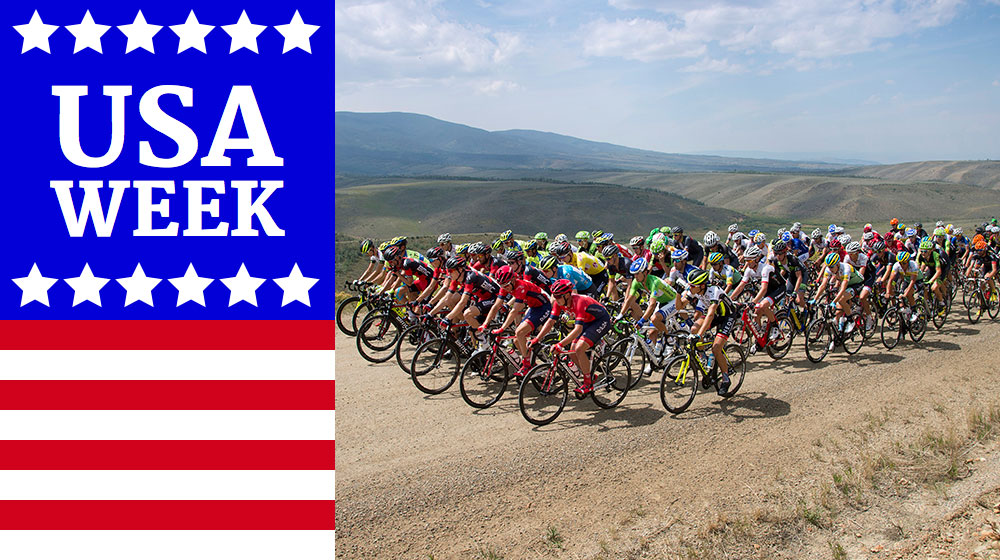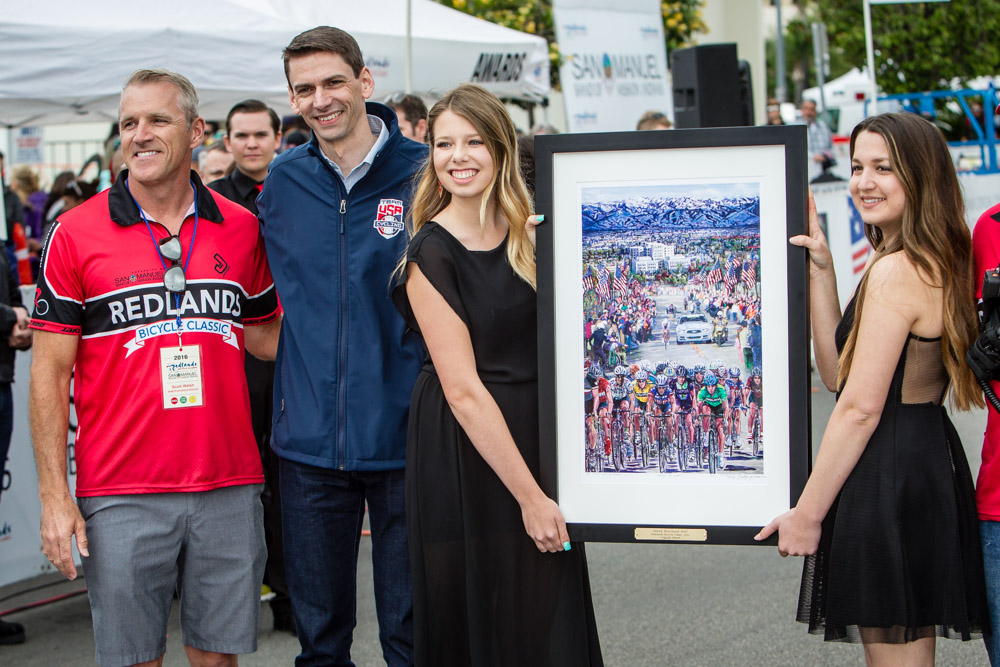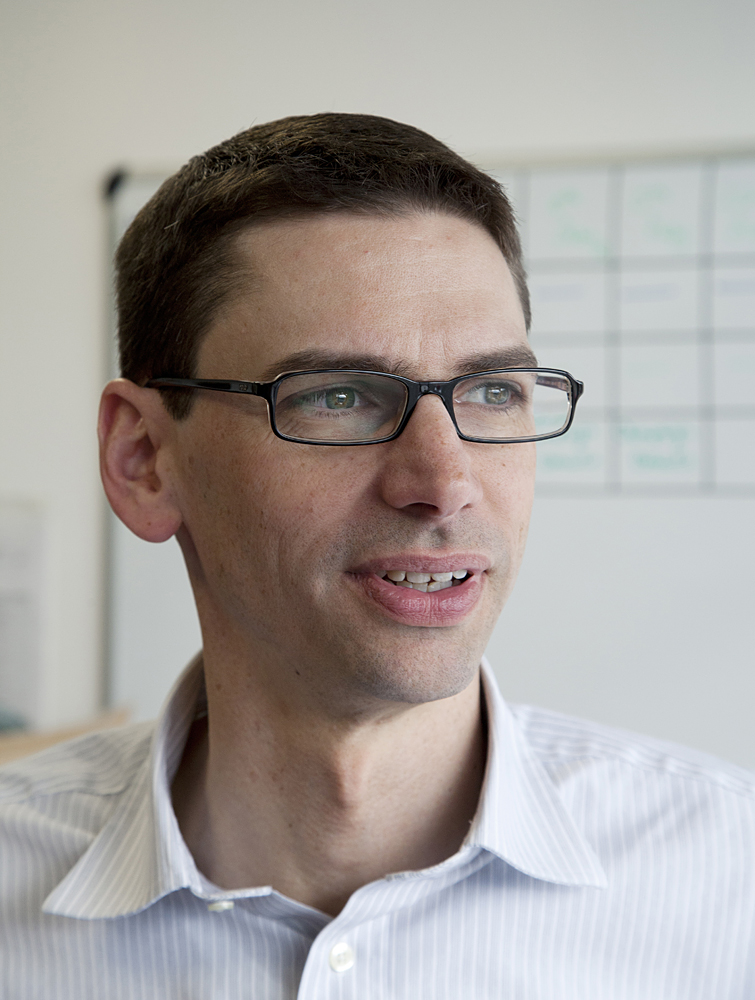USA Cycling president Bouchard-Hall fighting to keep racing relevant
USA Week: Road racing shrinking as alternatives grow



Road racing in the USA has come under a great deal of pressure since its peak in 2012, and new USA Cycling president Derek Bouchard-Hall is fighting to keep his organisation relevant under the pressure of declining membership levels. As the number of Americans who cycle recreationally increases, he is looking to capitalise on the growth of alternative formats for competitive cycling.
It might be easy to pin the decline of road racing in the US since 2012 on Lance Armstrong. After all, the fall of the most notable figure in the sport was devastating to the cycling community and contributed to the decline of interest in racing, but Bouchard-Hall says it isn't the only reason for road's decline.
"There are a number of factors that are difficult to understand," Bouchard-Hall says. "Going from having one of the biggest figures in all of sport to losing that individual - even worse - in negative circumstances, is a double whammy. Not only did you lose your hero but you gained this baggage of increased exposure of doping. There's no doubt that it was a drag on participation in the sport of cycling in America."
Simultaneous to the USADA reasoned decision that left Armstrong banned for life, alternative routes for amateurs to satisfy their competitive urges began to gain traction. The social fitness app Strava exploded in popularity after gaining some unfortunate media exposure in 2012 when a man died trying to break the record for a downhill segment in California. The platform now has over a million users who can measure their performances against professional and fellow amateurs alike without ever having to attend a race or pay an entry fee. More recently, another program called Zwift emerged that allows users to ride with pros in a virtual environment from their home trainers.
These apps, together with other semi-competitive events like gravel grinders - races that feature multiple sections of unpaved roads - and gran fondos - longer organised races where riders are individually timed - have all grown in popularity while road continues its slide.
"Our membership peaked in 2012 and our numbers have been down a bit since then. It does appear the fall is slowing, but we're down slightly year on year, driven mostly by road - cyclo-cross is up nicely, track is up, mountain bike is steady, but it's road where we're seeing the biggest drop - and it is our biggest segment. We believe that is because of the growth of alternative formats, gran fondos and recreational rides, Strava and Zwift. There are alternative formats to participate in cycling and they don't permit with us. Our retention is high, we're keeping people, but it's the number new people coming in [that has declined]. Newcomers to cycling are finding other formats to pursue like gran fondos or Strava and such."
There have also been shifts in the demographics of cycling, and the riders who came into the sport in the early Lance Armstrong era almost 20 years ago are getting older. "Our sport has a lot of masters racers, and we're seeing a bubble move through aging," says Bouchard-Hall. "There is also a general increase of risk aversion in society and that carries over to sports that carry greater risks like cycling."
The latest race content, interviews, features, reviews and expert buying guides, direct to your inbox!
On the other hand, there is an increased focus in the US on healthy lifestyles, and sports that suit the aging population. As a result, more people are riding bikes, and more cities are creating cycling infrastructure, adding bike sharing programs and lowering the barrier of entry for cycling. Some studies point to a 30 per cent increase in cyclists between 2012 and 2014, and while twice as many bikes are sold each year than cars, the majority of people riding bikes are doing so for recreation. Only 60,000 are registered to race out of some 7 million cycling enthusiasts, Bouchard-Hall says. There is a strong base of cyclists out there, but the sport itself is evolving.
"Racing is different, there are challenges - the rising cost of insurance and difficult access to venues. There are more formats to compete in than before - that's not a bad thing - but it poses challenges for USA Cycling which has been very focused on [traditional] racing. We need to reinvent ourselves as an organisation that is promoting all of these other formats so that we can continue to help and play a positive role in this growth of cycling.
"We're trying to rethink who we are and our relevance to the cycling community because the racing margin is under stress, it's challenged. We're sure it will come back, there is evidence we're stopping the decline."
Grassroots focus
One of the ways Bouchard-Hall wants to bring the numbers back up in the road racing scene is to put more of a focus on the grassroots racing events and make the domestic calendar more secure. Big UCI races like the USA Pro Challenge have a history of coming and going, he says, and the cancellation of the Colorado race is less concerning than the domestic scene.
"If you look back in history you'll see a pattern of these very big, wonderful events come and last for a period of time then leave. It's been the nature of the sport in American for a long time. I myself competed in the Tour Dupont. It's the nature of marketing endeavours. As long as you have more events coming around that is OK. We'd love it if these events could stay as long-standing events that become part of the fabric of American bike racing long-term. But we've struggle to do that. The Pro Challenge may come back next year and we'd love to see that. We still have Tour of California and Tour of Utah, and we're really excited about the Women's WorldTour events. I'm more concerned about the domestic level of events. There are a number of events like Gila, Somerville that have amazing histories. We'd love to prop those up and have them bigger, more secure and part of a real calendar of domestic racing. I'd feel better about American racing if the domestic circuit were healthier, stronger and more robust."
One of the first changes under Bouchard-Hall's was to combine the criterium (NCC) and road national calendars (NRC), reuniting the two back into the new Pro Road Tour. However, much of the series excludes Pro Continental teams like UnitedHealthcare, which dominated the NCC over the past few years, as they are only allowed to compete in the UCI-sanctioned events. The Continental teams with smaller budgets struggle to meet the travel demans of the calendar, despite a concerted effort by USA Cycling to make the schedule reasonable.
"We've struggled to create a cohesive calendar of events. This is our latest attempt. It was not at all an easy decision to combine them. But it was determined this was the best approach to have a single calendar of events," Bouchard-Hall says. "It's definitely not perfect, and not achieving all our goals, but there are some good things about it. It includes the best races, and I think it will grow over time. There's no doubt that we're still seeking to build a cohesive calendar of events that everyone will buy into, and that has a point system that has the right balance for crits versus road races. We've got something interesting to follow this year, and we'll see how it evolves."
Anti-doping in the amateur ranks
When Bouchard-Hall took over from Steve Johnson as CEO of USA Cycling less than a year ago, he gave out his e-mail address and asked the members to contact him with their concerns or ideas. Doping in amateur ranks was the number one complaint that he heard, and this year he expanded the anti-doping controls that USA Cycling funds for grassroots races. They did this by raising the fees for race promoters and racers alike, a move which drew some harsh criticisms.
"As you'd expect a lot of people were not happy to pay more to race," Bouchard-Hall says. "They were drowned out by the vast majority who were happy to contribute to increasing anti-doping. It's been well received. There were those who were unhappy and who don't care if their competitors are doping, or say we're fighting a problem that doesn't exist, or are just unhappy they're having to spend more money. It's understandable and valid, but we as an organisation made the decision that it was essential to take steps to fight doping.
"We have the data, we know that there is some level of doping going on in the amateur ranks, and we know our membership cares about it. If there is a known problem and we don't take steps to take care of it, it's a dereliction of our duty. The data and research shows that testing is an effective means to reduce doping. If there is an absence of risk of getting caught, it is a facilitator of bad behaviour. People don't want to be caught and if they know there's a chance they will be, it's a powerful mechanism for controlling behaviour."
New this year will be a new anti-doping committee, which will be announced soon, that will be evaluating the effectiveness of the anti-doping programs.
"We're going to be critical of ourselves as we're doing this. This level of amateur anti-doping testing doesn't exist in other sports, and we're proud of that. We're charting new territory. It's exactly what USAC should be doing is showing leadership."

Laura Weislo has been with Cyclingnews since 2006 after making a switch from a career in science. As Managing Editor, she coordinates coverage for North American events and global news. As former elite-level road racer who dabbled in cyclo-cross and track, Laura has a passion for all three disciplines. When not working she likes to go camping and explore lesser traveled roads, paths and gravel tracks. Laura specialises in covering doping, anti-doping, UCI governance and performing data analysis.
